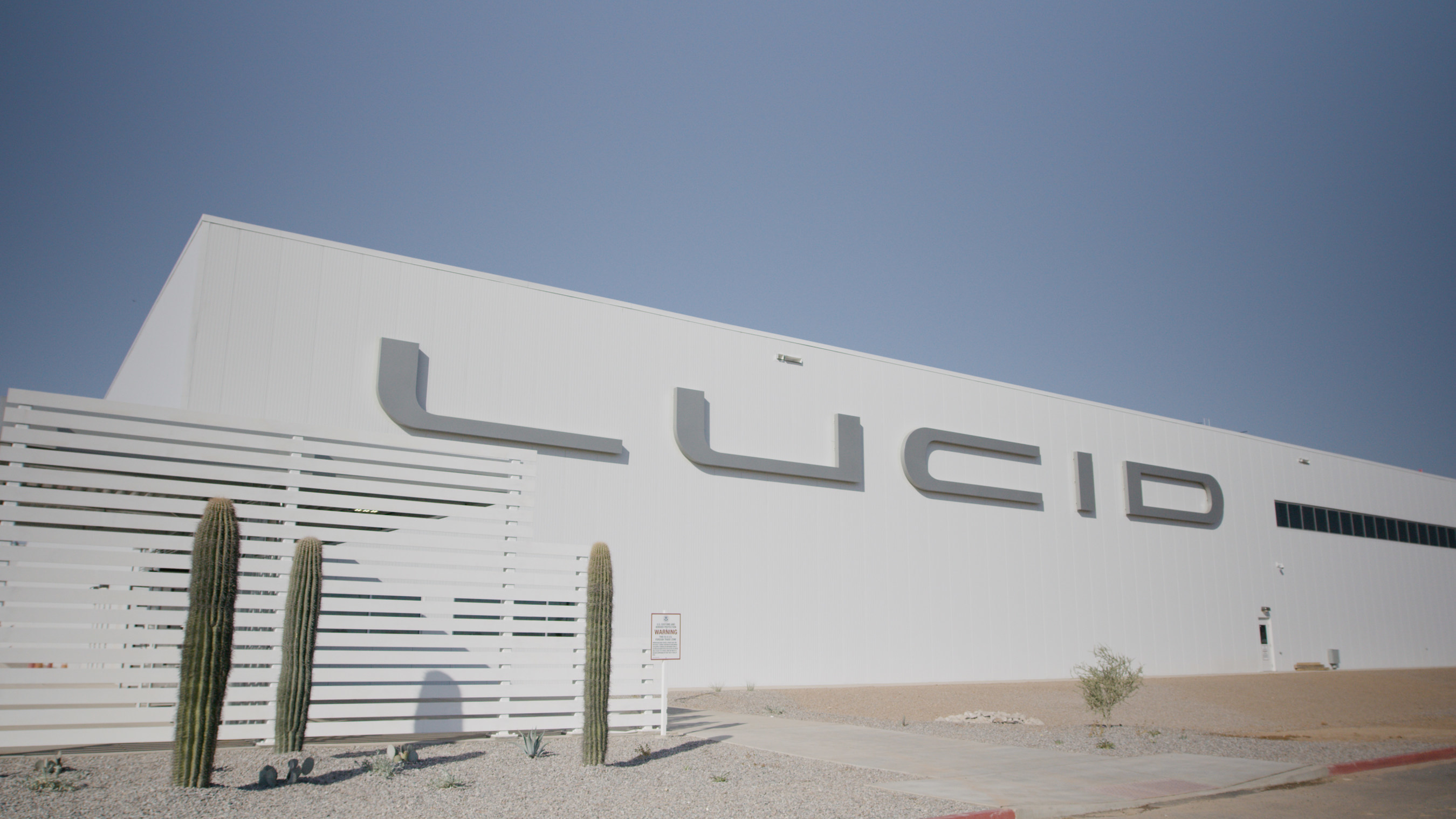Made in Arizona. It’s a tag that’s becoming more familiar as the state’s manufacturing base grows. Once heavily reliant on real estate development for its economy, Arizona now boasts more manufacturing jobs than construction.
To celebrate this diverse and rising sector, Governor Doug Ducey declared April “Made in Arizona Month” to encourage everyone to buy homegrown products from tortillas to semiconductor chips.

Chamber Business News spoke to one of the state’s leaders in the industry about the sector’s evolution and impact, Boeing Company’s Mark Gaspers, chairman of the board of the Arizona Manufacturers Council (AMC), the voice of the industry.
READ ALSO: Why the East Valley is No. 1 for aerospace manufacturing
Gaspers, who is senior manager for Boeing’s State and Local Government Operations in the Southwest, gave his take on the industry’s investment in Arizona over the past decade.
Here’s what Gaspers had to say:
Q: How has the manufacturing landscape in Arizona changed in the past decade?
A: A recent report shows that Arizona exports increased by over 51 percent from 2010 and 2019. During that time, manufacturers added 28,000 new jobs, an 18.7 percent increase. By 2019, there were 5,157 manufacturing businesses and 177,300 manufacturing jobs in the state.
Our success is not by accident. Arizona’s legacy companies paved the way for the innovative manufacturing and technology growth we’re seeing today.
Others played a role in pushing forward policies that have attracted new companies and accelerated growth for our long-term Arizona manufacturers. Elected leaders, communities, the AMC, the Arizona Chamber, trade associations and the Arizona Commerce Authority under Sandra Watson’s leadership.
Some of the policies that have proven effective are a 75 percent reduction in real and personal property taxes for Arizona Foreign Trade Zone users, refundable tax credits for manufacturers creating jobs and investing in Arizona, and a 100 percent sales factor that reduces corporate tax liability for high wage and fiscal benefit exporters.
Arizona also created additional depreciation, reducing the taxable value of an asset, and sales tax exemptions on purchases of manufacturing machinery, equipment and electricity used in the manufacturing process.
Education is another reason for our growth. We’ve seen rapid expansion of university research infrastructure and we have robust career and technical education programs with industry collaborating on workforce needs.
Today, these policies have diversified our economy and the breadth of the manufacturing sector. If you look at our council membership, it reflects a range of sectors and products from the Boeing AH-64 Apache to Karsten Manufacturing Ping Golf Clubs and Sub Zero appliances, to name just a few.
Q: Which sectors are seeing the most growth in Arizona?
A: We’re seeing a historic level of investment by the semiconductor industry. Plans for massive investments by Intel and TSMC (Taiwan Semiconductor Manufacturing Company) are a sign of great things to come. Not only are these companies hiring employees and investing here, they are attracting new companies and suppliers to Arizona.
Intel’s presence, for example, resulted in $8.58 billion for our economy in 2019. And that’s before its recent announcement of a historic $20 billion investment for two new Arizona fabs in Chandler.
We’re also grateful for Arizona Senator (Kyrsten) Sinema’s leadership in the passage of the bipartisan CHIPS for America Act, which is intended to restore America’s leadership in semiconductor manufacturing. That immediately impacted Arizona’s economy as it welcomed Intel’s plan of expansion.
Arizona has always been a leader in the aerospace and defense sector, and we continue to see growth and investment by Boeing, Honeywell, Raytheon, and Northrop Grumman as well as medium and small companies. There’s also a robust chain of suppliers with proximity to military testing facilities such as Yuma Proving Ground.
To put the extent of the aerospace and defense supply chain in context, take Boeing’s average annual spend with just Arizona suppliers— $1.4 billion per year. That’s roughly two times the economic impact of the last Super Bowl in the state every year.
Q: What does the future look like for Arizona’s manufacturing sector?
A: The future is bright and that means jobs today and opportunities for students tomorrow. One reason I am so excited for the future is because of the innovation and collaboration we see from our education partners.
We are fortunate to have Maricopa Community College District represented on our Board of Directors. Maricopa’s partnership with other institutions is a prime example of collaboration by education with industry. Maricopa County Community College District, Central Arizona College and Pima Community College partnered together to develop a unified, industry-recognized curriculum specifically designed to teach the skills needed for high-paying, high-tech advanced manufacturing jobs. NAU recognized this innovation and also partnered with these schools.
We have outstanding university partners that are focused on the needs of industry as well.
Arizona State University’s Fulton School of Engineering is the largest engineering college in the country.
The University of Arizona leads the country in research in several technologies including space, hypersonics, and quantum computing.
Embry-Riddle Aeronautical University’s Prescott campus is a crucial pipeline for the future engineering and aviation workforce of tomorrow.
Q: Any concerns for this sector that need to be addressed through state or federal policies?
A: We have seen increased investment here because the state is promoting a globally competitive environment that invites capital, promotes innovation, and furthers investment in research and development. Concerns for the sector would be if these policies were dismantled.
Additionally, the competitive landscape is not static. We should continue to build upon our policies that encourage companies to invest in research and development in Arizona.
We support continued investment in our education system but do have concerns for our smaller manufacturers impacted by the decision of Prop. 208. We are hopeful that this legislative session yields support to our small businesses.
Workforce remains a top concern for manufacturers. In addition to our education partners’ eye to the future, their ability to rapidly respond to shocks such as the pandemic are important to all of us as Arizonans. Employment in the manufacturing industry declined by 4.6 percent at the start of Covid, but has seen a return.
We are watching with great interest the debate on Capitol Hill regarding tax reform, labor and environmental issues.
Q: How is manufacturing helping Arizona’s economy?
A: An underappreciated aspect of manufacturing is the benefit it imparts on all other sectors of our economy. It is an industry that generates significant economic activity well beyond primary manufacturing operations.
A report by the Rounds Consulting Group states that for every dollar of manufacturing value that is added, another three dollars and sixty cents of value-add is generated elsewhere in the local economy. Additionally, each 1,000 direct manufacturing jobs creates another 1,542 secondary jobs in every other industry for a total of 2,542 jobs.
Other sectors are benefiting, too, from agriculture to health care to retail and transportation.
As we see in the case of TSMC, large manufacturers that have more of their supply base located in the state magnifies this multiplier effect on the economy. And as we attract higher wage positions within manufacturing with regional and other engineering centers, the impact of the multiplier effect increases as well.
Arizona’s manufacturing sector has fared remarkably well both prior to and through the 2020 recession. In Arizona, year-over-year growth in manufacturing employment was growing at about 5 percent per annum coming into 2020, thanks in large part to recent state and federal regulatory and tax relief.
Further, while all states lost manufacturing jobs in 2020, Arizona’s losses appear to be about half the rate observed in other states, and the state continues to attract the interest of potential new manufacturers, which bodes well for resurgent growth in 2021 and beyond.To read more about the AMC, visit: Arizona Manufacturers Council.
This story was originally published at Chamber Business News.




